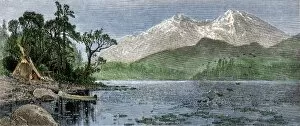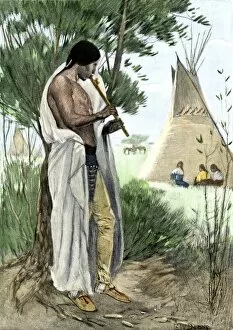Tipi Collection (page 11)
The tipi, also known as a tepee or teepee, holds a rich history and cultural significance for various Native American tribes
All Professionally Made to Order for Quick Shipping
The tipi, also known as a tepee or teepee, holds a rich history and cultural significance for various Native American tribes. Originating from the Sioux tepee made of buffalo-hide, this iconic structure was widely used by many indigenous communities across North America. In an Omaha Indian village of tipis, these cone-shaped dwellings formed the heart of their community. They provided shelter and served as gathering places for families to share stories and traditions. The image captured in EXPL2A-00169 showcases Solomon Juneau's trading post on the Milwaukee River in 1820, where tipis stood tall amidst the wilderness. A photograph taken in 1891 by John C. H. Grabill reveals a Sioux encampment on or near Pine Ridge Reservation in South Dakota. This mesmerizing sight portrays Minionjou Sioux Native Americans residing within their tipi camp - a testament to their enduring connection with nature and ancestral lands. Artistic representations like "Indian Fantasy" painted in 1914 depict the allure of tipis through vibrant colors on canvas. Similarly, "Mandan Indians with Medicine Man in Bear Skin" captures a moment frozen in time around 1875 when these majestic structures were still prevalent among tribes. Even beyond North America's borders, we find references to tipis' influence. In Jura and Islay's scenic landscapes depicted by Sheelins, distant views reveal how these portable homes have inspired architectural styles worldwide. Nature often interacts harmoniously with these traditional dwellings; snow falling gently upon them creates an enchanting winter scene while capturing the resilience of those who lived inside them during harsh winters. Furthermore, pigments on deerskin bring forth images such as "The Shoshone Sun Dance, " highlighting sacred ceremonies performed within these sacred spaces that held deep spiritual meaning for indigenous peoples.











